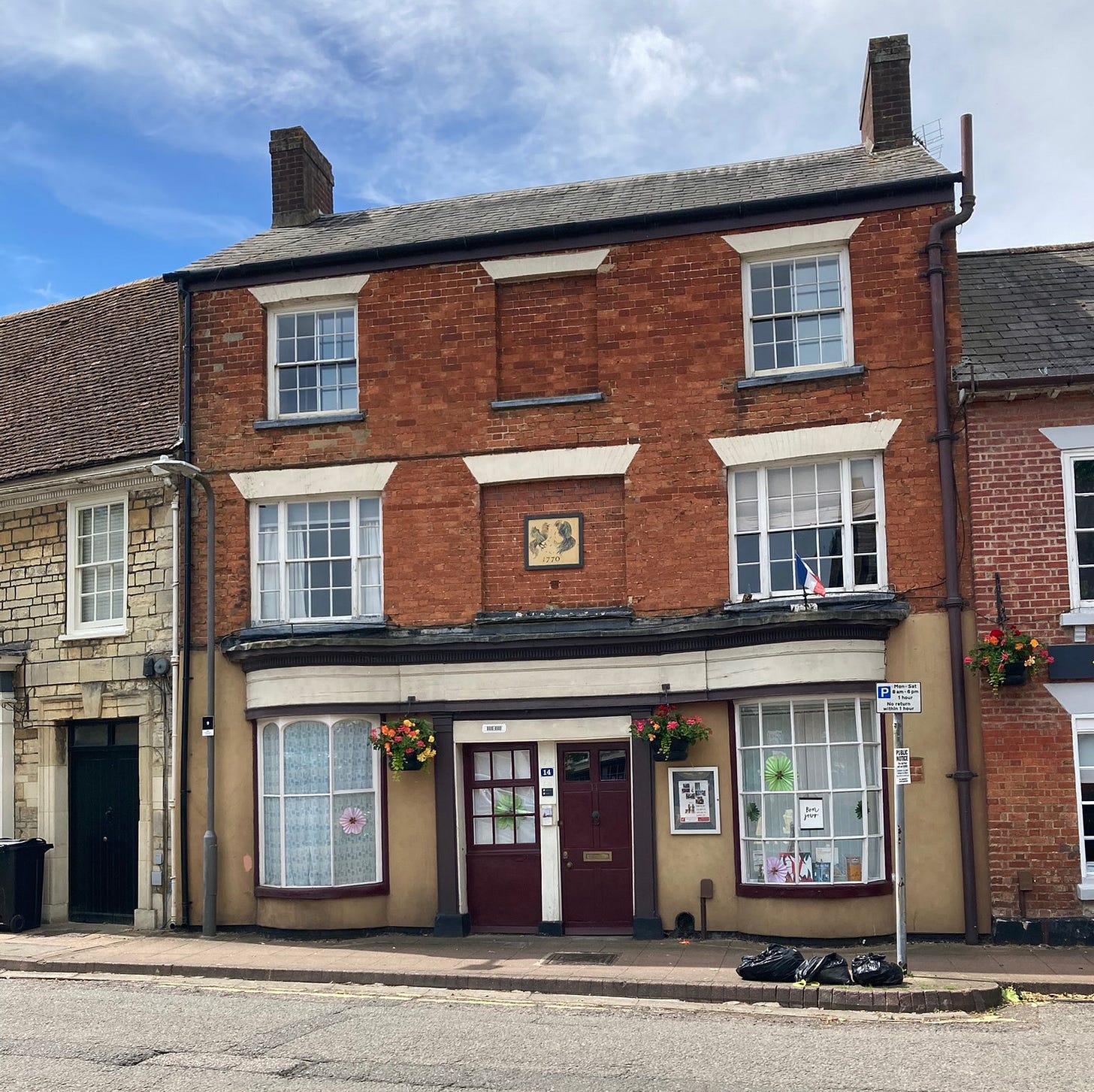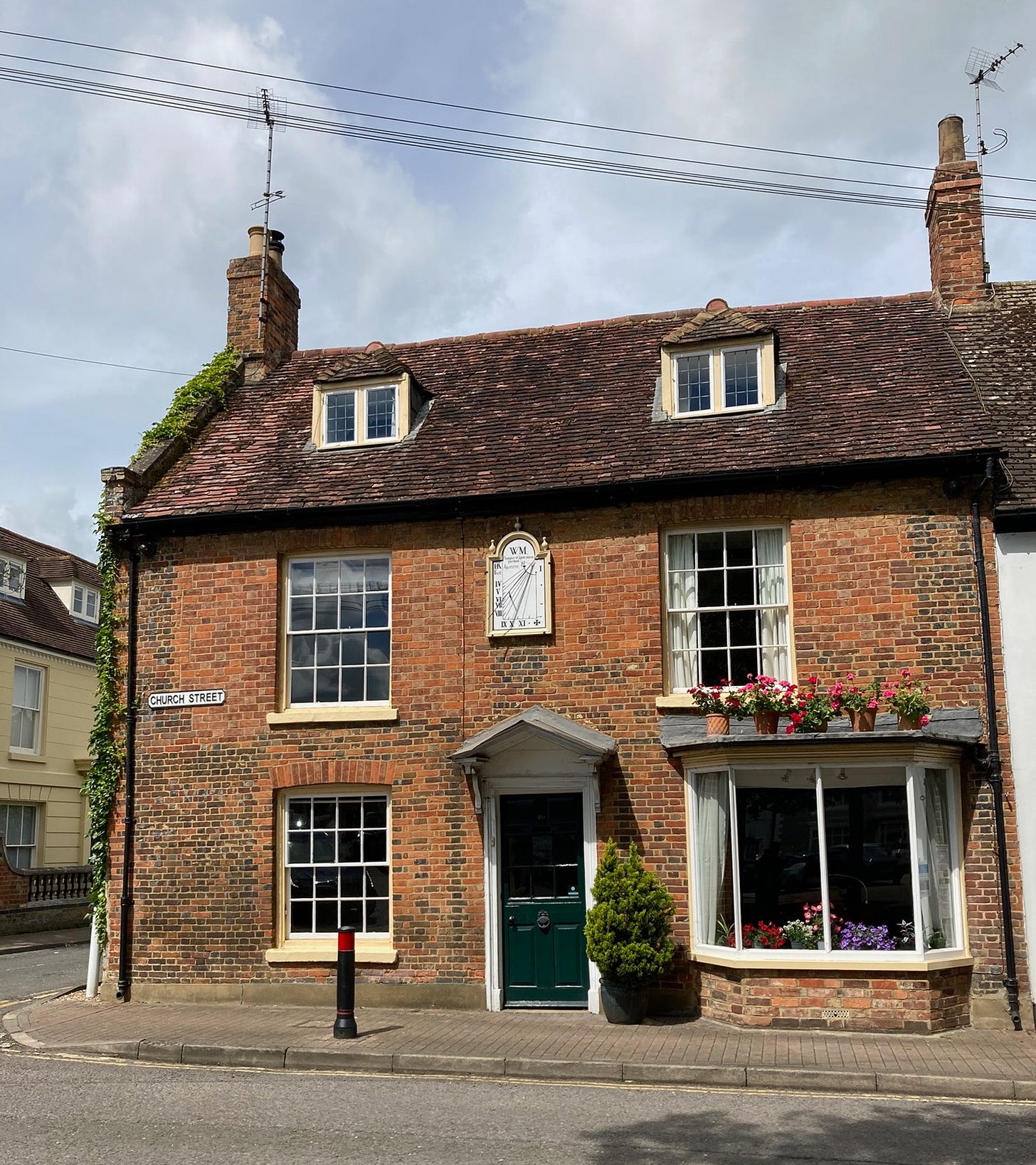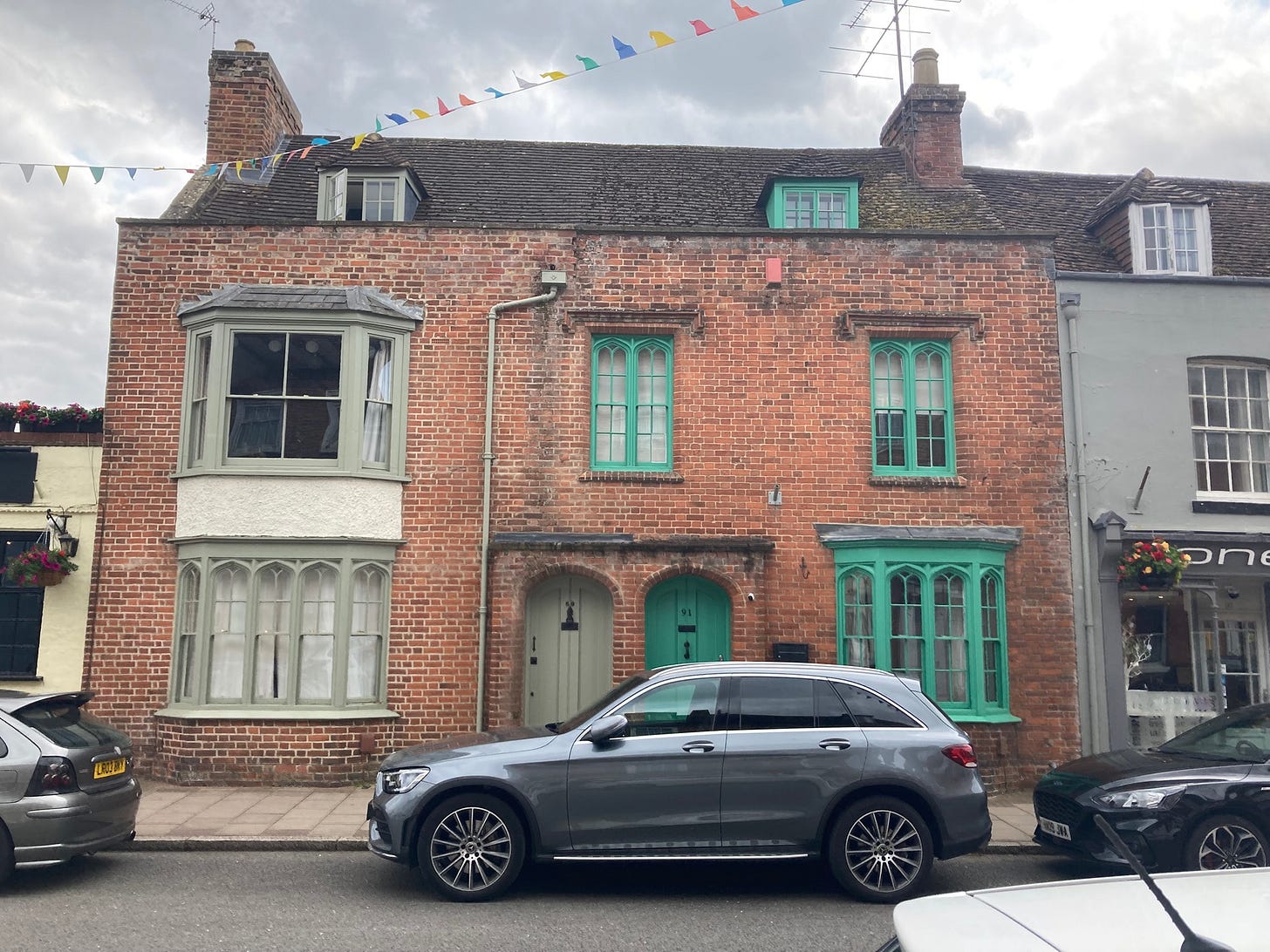Last weekend I led an architecture walk of Stony Stratford, which along with Bletchley and Wolverton is one of the three historic towns swallowed up by Milton Keynes when it was founded in 1967. Stony is interesting because it grew up on Watling Street, the Roman road between London and Chester. While it’s not mentioned in the Domesday Book it’s clearly old, getting permission from Richard I in 1194 to have a market here to feed and water those taking the long journey. The Great Ouse meets the road here, on its way meandering from Northamptonshire to Norfolk, and provided travellers with their biggest challenge en route. The town and its many inns and chapels grew rapidly in the medieval period as a rest stop for weary travellers. By the sixteenth century horse-drawn coaches are taking up to a day to reach here from London, and the town was a convenient stopping point, not least because the river was such a daunting obstacle that it felt easier to tackle it in the morning on fresh legs than last thing after a long day travelling. Eventually the series of rickety wooden bridges with their tendency to collapse or be washed away on the floodplain would be replaced y its current stone bridge in 1835. This was after a final disaster, a collapse caused by glassmaking equipment being hauled across the previous year.
The road is the key to the place. From medieval carriageway to Georgian coaching town, the legacy of the Romans and its position on the river made Stony the Watford Gap of its day. It was the railway that created the first challenge to the horse drawn coaches that brought the town its prosperity. Nearby Wolverton got the railway on what is now the West Coast Main Line, in 1838. The line skirts Watling Street here by a mile or so. Within a few decades there was a huge railway works at Wolverton, and a whole new red brick industrial town to service it. Stony fell into its orbit, and new houses were built for its workforce. A steam tram took workers from Stony to Wolverton, and away from Watling Street.
Then cars came to monster the town. The advent of motor travel changed the character of it completely. By the mid-twentieth century Watling Street, now the A5, became one of the busiest roads in the country, and travellers driving north or south were funnelled through Stony’s narrow high street. In the late 1920s the town’s church with its medieval tower was shortened to widen the road. Soon the Eastern National Bus Company was using a huge shed behind the Georgian Bull inn to park their coaches, the entire town grimy with exhaust fumes and worn out from the constant thunder of cars. The development corporation for Milton Keynes made Stony’s town centre a conservation area in 1975, at the very point its historic fabric was in the most danger it had felt since the last of the great fires here in 1742. Back then the timber frames and thatch had quickly caught light, and 146 buildings had been destroyed. There had been three other major major fires within forty years, and so Stony became a place that was used to rapid rebuilding. Cars looked like they may be the town’s nemesis.
By the late 1950s the M1 motorway was being built. This took much of the north-south traffic that the old A5 had shouldered, so by the mid-sixties some of the heavy traffic was being diverted onto that. And so Stony begins to become one of the most bypassed of all towns: by the railway; by the motorway; then in the mid-seventies, by Queen Eleanor Street, a short, fast spur that takes traffic away from the high street and joins at either end. Finally, in 1980 a new stretch of the A5 opens, a roaring dual carriageway that ploughs through the centre of Milton Keynes. This re-routes the still busy A-road away from the heart of Stony Stratford, and suddenly the high street is quiet again, quieter than it has been for centuries.
But, luckily, not dead. The conservation area begins to revive interest in maintaining this historic town. Once cheap, knackered old houses get done up and become grand expensive ones. The high street becomes one of the few places for independent shops and cafes to thrive in the new town, whose main shopping area relies on big national chains to keep it full and busy. A few cunning interventions, such as the creation of Cofferidge Close in 1975, allow the town to keep functioning in a modern world. Wayland Tunley’s modernist complex of houses, shops, offices and parking preserves the 60 trees of the seventeenth century orchard that had stood here, and gives the town its most handsome modern landmark while allowing the rest of it to preserve its strange old heritage.
So old Stony, often flooded, burned down and bypassed, is now the perfect setting for an architecture walk. Here you can see all the often reconstructed buildings with medieval roots, from the remains of Magadalene Tower, last remnant of a church burned down in 1742, to No.1 Market Square, better known as the Penrith Tea Rooms in Withnail and I (a film I’ve always found creepily homophobic but which I know is more generally beloved). Pop into the Cock and the Bull, and exchange cock and bull stories. Go weak at the knees at Horsefair Green, with its facing off of Georgian and Victorian styles across the pollarded lime trees. Wander round the flood plain, explore the back lanes, see fragments of history everywhere. And thank the bypasses, every one.










Even in the 1970s, Stony Stratford was part of my father's route from the edge of Warwickshire to London.